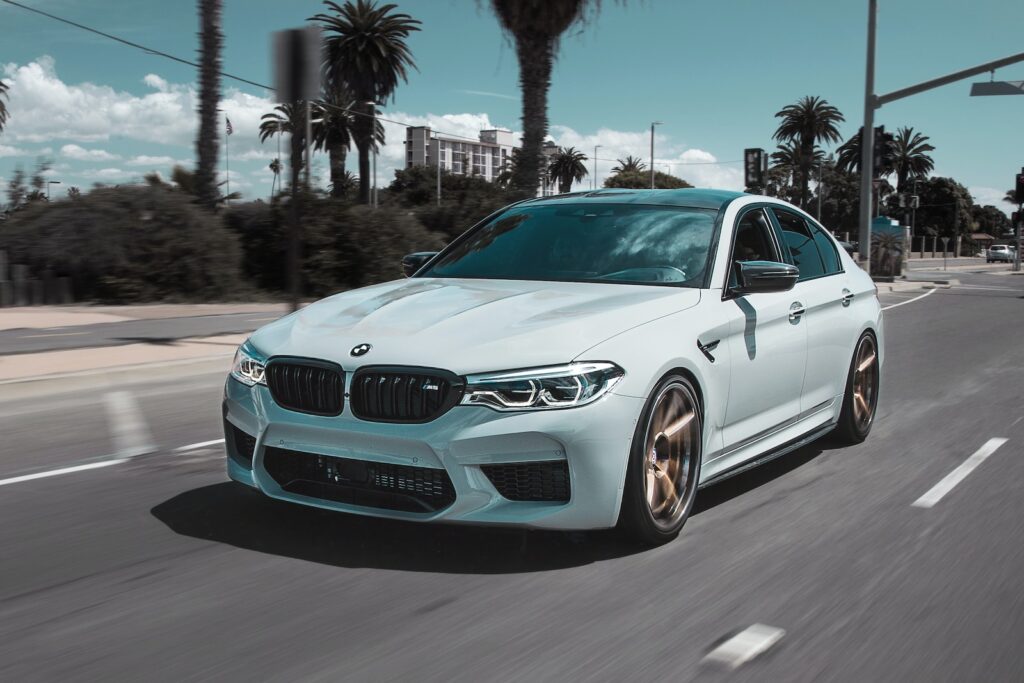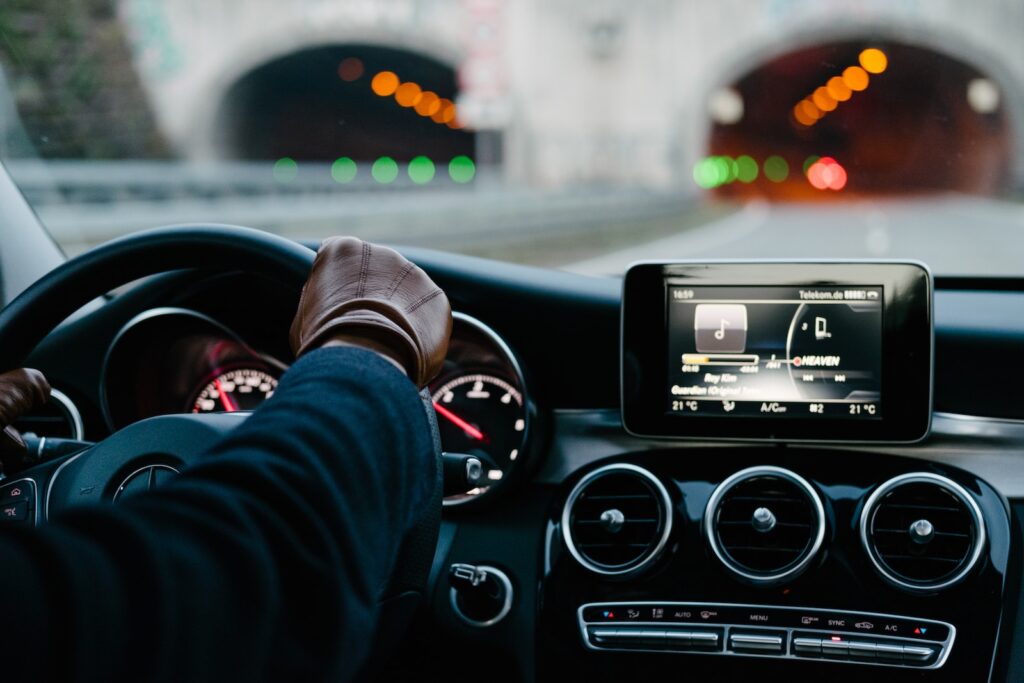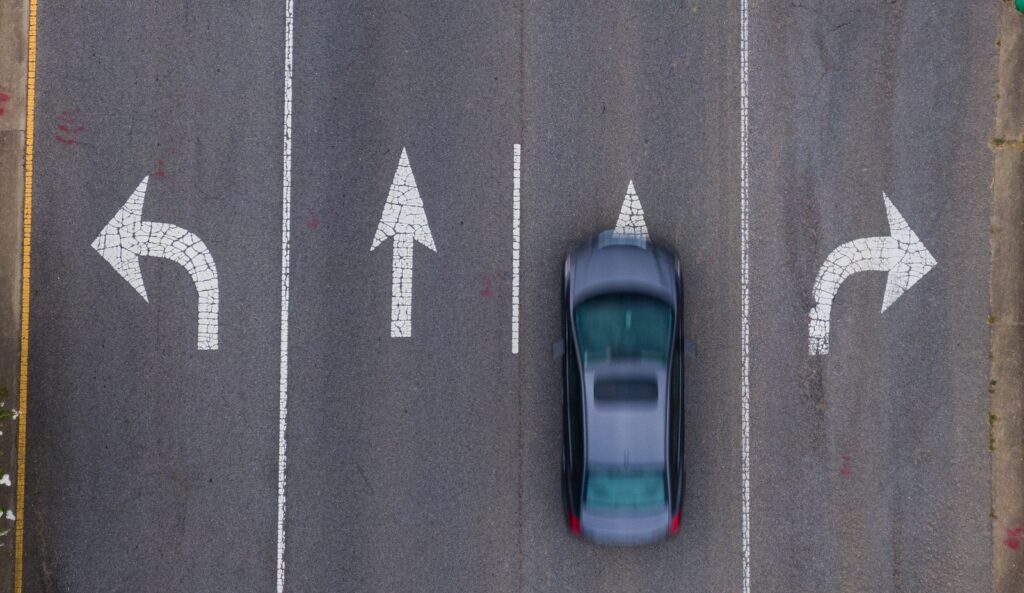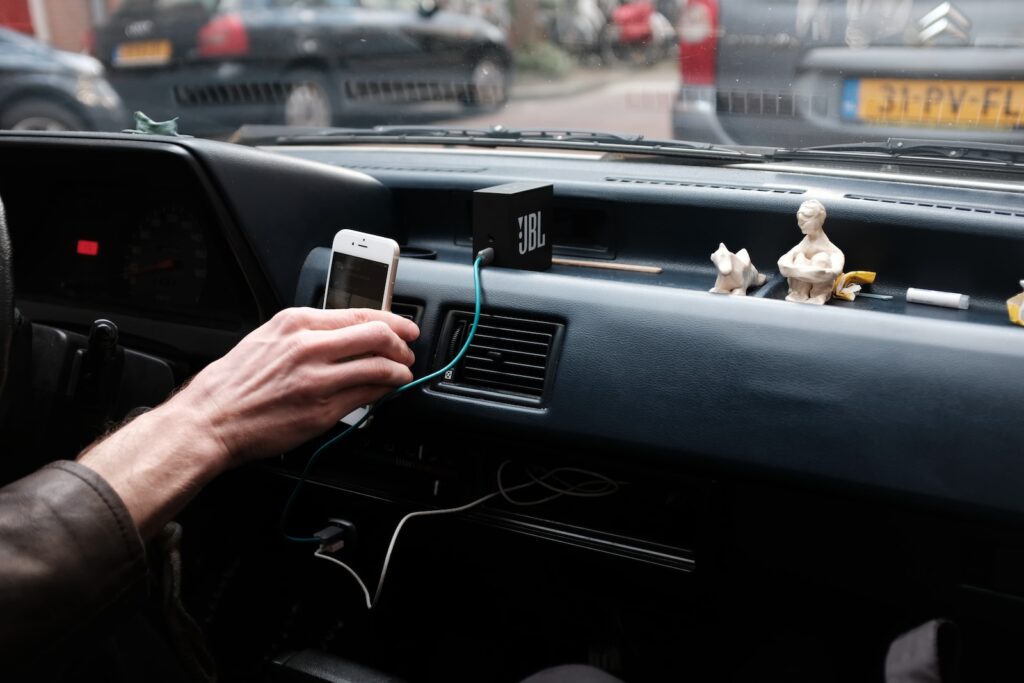Did you know that a new car can lose up to 20-30% of its value within the first year and up to 60% of its value after five years? This means that a car that initially costs $30,000 may only be worth $12,000 after five years.
Car depreciation is the decrease in the value of a vehicle over time due to wear and tear, age, and other factors. Understanding this decline is crucial for every car owner. It can shape your decisions on when to buy, sell, or trade-in, ensuring you get the most out of your investment.
Table of Contents
Understanding Depreciation
What is Depreciation?
Depreciation is the decrease in the value of an asset over time. In the context of cars, depreciation refers to the decrease in the value of a car as it ages, accumulates mileage, and experiences wear and tear. Cars are not investments that appreciate in value over time unless they are old-timers. Instead, they are assets that lose value rapidly, especially in the first few years of ownership.

How Depreciation Affects Cars
Car depreciation is a fact of life for all car owners. From the moment a new car is driven off the dealership lot, it begins to lose value. According to Car and Driver, a new car can lose up to 20% of its value in the first year of ownership, and up to 60% of its value after five years. The rate of depreciation varies depending on factors such as make and model, age, condition, mileage, ownership history, and even the vehicle’s color.
Depreciation affects cars in several ways. First, it impacts the resale value of the car. A car that has depreciated significantly will be worth less on the used car market, which can make it harder to sell and result in a lower sale price. Second, depreciation affects the cost of car insurance. As the value of the car decreases, the cost of insuring it also decreases. Finally, depreciation can impact the cost of car loans. If a car has depreciated significantly, the amount owed on the loan may be more than the car is worth, which can make it harder to refinance or trade in the car.
To minimize the impact of car depreciation, it’s important to choose a car that holds its value well, maintains the car properly, and avoids excessive mileage and wear and tear. Additionally, some car owners may choose to sell their car before it depreciates too much or trade it in for a new car. By understanding how depreciation works and taking steps to minimize its impact, car owners can make the most of their purchases.
Factors Influencing Car Depreciation
Car depreciation is a natural process that occurs as soon as a vehicle is driven off the lot. However, the rate at which a car depreciates can vary significantly depending on several factors. Here are some of the key factors that influence car depreciation:
Age and Mileage
Age and mileage are two of the most important factors that impact a car’s depreciation rate. Generally, the older a car is and the more miles it has, the less it will be worth. According to U.S. News, the average new car depreciates by as much as 30% by the end of the first year of ownership and an additional 15% to 18% each year, for a total of about 60% of the original value lost by the end of the fifth year, as previously mentioned. This means that a car’s value can drop by thousands of dollars in just a few years.
This means that your brand-new $60,000 SUV could depreciate to a value between $42,000 and $48,000 in just a year. In 6 years, your SUV will be worth around $24,000.

Make and Model
The make and model of a car can also have a significant impact on its depreciation rate. Luxury cars, for example, tend to depreciate faster than non-luxury cars. This is because luxury cars often have higher purchase prices, which means they have further to fall in terms of value. Additionally, some models may be more popular than others, which can impact their resale value.
Condition and Maintenance
The condition of a car is another important factor that can impact its depreciation rate. Cars that are in poor condition, with dents, scratches, and other damage, will be worth less than cars that are in excellent condition. Additionally, cars that have been well-maintained and regularly serviced will typically be worth more than cars that have not.
Vehicle Type and Demand
The type of vehicle and the demand for that type of vehicle can also impact its depreciation rate. For example, SUVs and trucks tend to hold their value better than sedans and small cars. This is because they are more in demand, especially in certain regions of the country. Similarly, electric and hybrid vehicles may depreciate more slowly than traditional gasoline-powered vehicles due to increasing demand for eco-friendly cars.
In conclusion, several factors influence a car’s depreciation rate. Age, mileage, make and model, condition and maintenance, and vehicle type and demand all play a role in determining how much a car will depreciate over time.
Depreciation Rates by Car Brands
When it comes to car depreciation rates, different brands have different rates. Some brands hold their value better than others, while some lose their value faster than others. In this section, we will look at the depreciation rates of some popular car brands.
Toyota and Honda
Toyota and Honda are known for their reliability and durability. They are two of the most popular car brands in the world. According to Car Depreciation Rates and Curves by Make and Model, Toyota and Honda cars have an average depreciation rate of around 46% over five years. This means that a car that was bought for $20,000 would be worth around $10,800 after five years.
Luxury Sedans
Luxury sedans are known for their high-end features and luxurious interiors. However, they also tend to have a higher depreciation rate than non-luxury cars. According to CarEdge, luxury sedans have an average depreciation rate of around 49% over five years. This means that a luxury sedan that was bought for $50,000 would be worth around $25,500 after five years.
Pickup Trucks
Pickup trucks are known for their versatility and durability. They are popular among people who need a vehicle for work or for towing. According to Car Depreciation Calculator, pickup trucks have an average depreciation rate of around 38% over five years. This means that a pickup truck that was bought for $30,000 would be worth around $18,600 after five years.
Jeeps
Jeeps are known for their off-road capabilities and ruggedness. They are popular among people who love to go on adventures and explore the outdoors. According to U.S. News, Jeeps have an average depreciation rate of around 30% over three years. This means that a Jeep that was bought for $35,000 would be worth around $24,500 after three years.
Calculating Car Depreciation
Car Depreciation Calculator
Calculating car depreciation can be a tricky task as it depends on various factors. Fortunately, there are car depreciation calculators available online that can help you estimate the value of your car after it has been used. These tools use complex algorithms to determine the depreciation rate of your vehicle based on different parameters such as the make and model of your car, its initial value, and the number of years you have owned it.
One such car depreciation calculator is available on the CarEdge website. Their calculator allows you to see the expected resale value of over 300 models for the next decade. They also have built historical depreciation curves for over 200 models, many of which go back as far as 12 years. By inputting just a few details, such as the make and model of your car, the year it was manufactured, its mileage, and the condition of the vehicle, you can get an estimate of its current value.
IRS and Car Depreciation
When it comes to car depreciation, the IRS has set certain rules and regulations that taxpayers must follow. Understanding these rules is important for individuals and businesses alike to ensure they are claiming the correct deductions and avoiding any penalties or fines. This section will provide an overview of the IRS and car depreciation, including deductions and business use, Section 179 deduction, and MACRS depreciation.
Deductions and Business Use
Taxpayers who use their car for business purposes may be eligible for certain deductions. The IRS allows taxpayers to deduct the expenses associated with the business use of their car, such as fuel, maintenance, and repairs. However, taxpayers must keep accurate records of their car expenses and the business use of their car to claim these deductions.
In addition to these deductions, taxpayers may also be able to deduct the depreciation of their car. The amount of depreciation that can be deducted depends on several factors, including the type of car, the date it was placed in service, and the method of depreciation used.
Section 179 Deduction
The Section 179 deduction allows taxpayers to deduct the cost of certain types of property, including cars, in the year they are placed in service. For tax years beginning in 2022, the maximum Section 179 expense deduction is $1,080,000, which is reduced by the amount by which the cost of Section 179 property placed in service during the tax year exceeds $2,700,000. Additionally, the maximum Section 179 expense deduction for sport utility vehicles placed in service in tax years beginning in 2022 is $27,000.
MACRS Depreciation
The Modified Accelerated Cost Recovery System (MACRS) is the method used by the IRS to depreciate most types of property. Under MACRS, taxpayers must use a specific depreciation method and recovery period based on the type of property and the date it was placed in service.
For passenger automobiles to which no bonus first-year depreciation applies, the depreciation limit under Sec. 280F (d) (7) is $10,200 for the first tax year; $16,400 for the second tax year; $9,800 for the third tax year; and $5,860 for each succeeding year. Taxpayers who use their car for business purposes should consult with a tax professional to determine the best method of depreciation for their specific situation.
In conclusion, understanding the IRS rules and regulations regarding car depreciation is important for individuals and businesses alike. By keeping accurate records of car expenses and business use, and by using the correct depreciation method, taxpayers can ensure they are claiming the correct deductions and avoiding any penalties or fines.
The Impact of Depreciation on Resale Value
Understanding Resale Value
One of the most significant impacts of depreciation on a car is its resale value. Resale value is the amount of money a car can fetch in the market when it is sold. According to Bankrate, new cars depreciate in the blink of an eye, and a new car can lose up to 20% of its value in the first year. After the first year, the depreciation rate typically “levels out,” and the loss continues to decline from there.
The resale value of a car depends on several factors, including the make and model, the year of manufacture, the mileage, and the condition of the car. Cars that are in good condition, have low mileage, and are well-maintained tend to have a higher resale value than cars that are in poor condition, have high mileage, and are poorly maintained.
High Resale Value Cars
Some cars have a reputation for having a high resale value. These cars tend to retain their value well over time, which can make them a good investment for buyers who plan to resell their cars in the future. According to Kelley Blue Book, some of the cars with the highest resale value include the Toyota Tacoma, Jeep Wrangler, and Subaru WRX.
Cars with a high resale value typically have a few things in common. They are reliable, have a good reputation, and are in high demand. They also tend to have a low depreciation rate, which means that they lose their value more slowly than other cars. Buyers who are looking for a car with a high resale value should consider these factors when making their purchase.
In conclusion, depreciation has a significant impact on the resale value of a car. Buyers who are looking to sell their car in the future should consider buying a car with a reputation for having a high resale value. Additionally, they should take steps to maintain their car and keep it in good condition to maximize its value in the market.
Depreciation and Cost of Ownership
When considering the cost of owning a car, depreciation is a major factor to take into account. Depreciation is the decrease in the value of a car over time, and it can have a significant impact on the overall cost of ownership. In this section, we will explore the relationship between depreciation and various other costs associated with owning a car.
Insurance and Depreciation
Insurance is a necessary cost for all car owners, but it can also be affected by depreciation. As a car loses value over time, the cost to insure it may decrease. This is because the insurance company will have to pay out less money in the event of an accident, as the car is worth less than it was when it was new. However, it is important to note that other factors, such as the driver’s age and driving record, can also affect the cost of insurance.
Fuel Economy and Depreciation
Fuel economy is another factor that can be affected by depreciation. As a car gets older and its value decreases, it may become less fuel-efficient. This is because older cars often have less advanced technology and may require more maintenance to keep running efficiently. However, it is important to note that fuel economy can also be affected by other factors, such as the driver’s habits and the type of driving they do.
Repairs and Maintenance Costs
As a car ages, it will require more repairs and maintenance to keep it running smoothly. This can be a significant cost for car owners, and it is important to take into account when considering the overall cost of ownership. However, it is important to note that the cost of repairs and maintenance can vary widely depending on the make and model of the car, as well as the quality of the parts used.
How to Minimize Car Depreciation
Car depreciation is a natural part of owning a vehicle. However, there are ways to minimize the rate of depreciation and get the most out of your investment. Here are some tips to help reduce the impact of depreciation on your car’s value.
Buying Used Cars
One of the best ways to minimize car depreciation is to buy a used car instead of a new one. New cars depreciate quickly, losing up to 20% of their value in the first year alone. By purchasing a used car that is a few years old, you can avoid this initial drop in value.
When buying a used car, it is important to do your research and find a vehicle that is in good condition. Look for cars with low mileage, a clean history report, and a good maintenance record. You can also consider buying a certified pre-owned car, which has been inspected and refurbished by the manufacturer.
Avoiding Modifications
Modifying your car may seem like a good way to personalize it and make it stand out. However, modifications can actually hurt the resale value of your vehicle. Most buyers prefer to purchase cars that are in their original condition, without any aftermarket upgrades.
If you do decide to make modifications to your car, it is important to choose upgrades that are reversible and do not damage the vehicle. Avoid making changes to the engine or drivetrain, as these can significantly impact the car’s value.
Keeping Low Mileage
Another factor that affects car depreciation is mileage. The more miles a car has, the less it is worth. To minimize depreciation, it is important to keep your mileage as low as possible.
To do this, consider carpooling or using public transportation for your daily commute. You can also combine errands and plan your trips more efficiently to reduce the amount of driving you do. Regular maintenance can also help keep your car running smoothly and reduce the risk of breakdowns that can lead to higher mileage.
By following these tips, you can minimize the impact of depreciation on your car’s value and get the most out of your investment.
Depreciation and Car Financing
When financing a car, it is important to consider the impact of depreciation on the value of the vehicle over time. Depreciation is the decrease in the value of a car over time due to wear and tear, age, and other factors. As a result, cars generally lose value quickly, with a new car losing at least 20% of its original value in the first year alone Car and Driver.
Negative Equity
One of the biggest risks of depreciation when financing a car is negative equity. Negative equity occurs when the amount owed on a car loan is greater than the current value of the car. This can happen when the car loses value faster than the loan is being paid off, or when the borrower takes out a long-term loan with a low down payment.
Negative equity can be a major problem for borrowers, as it can make it difficult to sell or trade in the car if needed. In some cases, borrowers may even owe more than the car is worth if they try to sell it. To avoid negative equity, borrowers should consider making a larger down payment, choosing a shorter loan term, or buying a used car that has already experienced most of its depreciation.
Gap Insurance
Another way to protect against the risks of depreciation is to purchase gap insurance. Gap insurance is an optional insurance policy that covers the difference between the amount owed on a car loan and the current value of the car in the event of a total loss. This can be particularly useful for borrowers who have taken out a long-term loan or who have a low down payment, as these factors can increase the risk of negative equity.
While gap insurance can be a useful tool for protecting against the risks of depreciation, borrowers should be aware that it can be expensive. In some cases, gap insurance may add hundreds of dollars to the cost of a car loan. As a result, borrowers should carefully consider whether gap insurance is worth the cost, and compare quotes from multiple insurance providers to find the best deal.
In summary, depreciation is an important factor to consider when financing a car. Borrowers should be aware of the risks of negative equity and consider strategies like making a larger down payment or choosing a shorter loan term to avoid this problem. Additionally, gap insurance can be a useful tool for protecting against the risks of depreciation, but borrowers should carefully consider the cost before purchasing this type of insurance.








